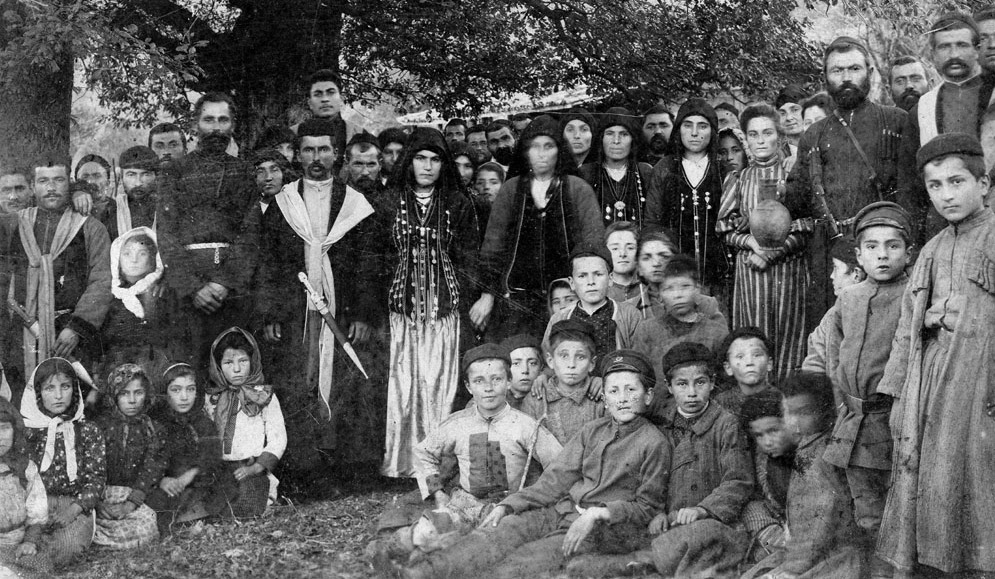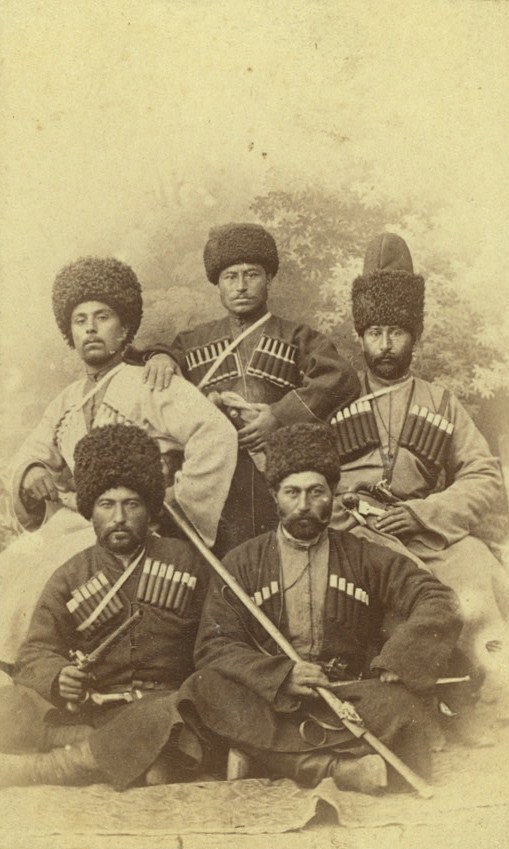|
Tusheti
Tusheti ( ka, თუშეთი) is a historic region in northeast Georgia. Geography Located on the northern slopes of the Greater Caucasus Mountains, Tusheti is bordered by the Russian republics of Chechnya and Dagestan to the north and east, respectively; and by the Georgian historic provinces Kakheti and Pshav-Khevsureti to the south and west, respectively. The population of the area is mainly ethnic Georgian people, Georgians called Tushs or Tushetians ( ka, tushebi). Historically, Tusheti comprised four mountain communities: the Tsova (living in the Tsova Gorge), the Gometsari (living along the banks of the Tushetis Alazani River), the Pirikiti (living along the banks of the Pirikitis Alazani River) and the Chaghma, living close to the confluence of the two rivers). Administratively speaking, Tusheti is now part of the ''raioni'' of Akhmeta, itself part of Georgia's eastern region of Kakheti. The largest village in Tusheti is Omalo. History The area is thought to have l ... [...More Info...] [...Related Items...] OR: [Wikipedia] [Google] [Baidu] |
Tushetians
The Tushetians , or Tush , are a subgroup of Georgians who mainly live in Tusheti. Tsova Tushetians speak the Tsova Tushetian language and Chagma Tushetians speak the Chagma Tushetian dialect of Georgian language, Georgian. Subgroups The Tush divide themselves into two groups, the Chagma-Tush, who speak the local Georgian dialects, Georgian dialect and the Tsova-Tush, also known as Bats or Batsbi, who speak the Bats language, a Nakh language. Most Bats also speak Georgian, to which there is a continuing trend of linguistic assimilation. Despite differences in language and culture (to a degree), both Chagma- and Tsova-Tush consider themselves to be part of the larger group of Tush, which in turn is considered a subgroup of Georgians. Appearance Anthropologically Tushetians have an Eastern Georgian type of face, with light colored eyes and hair color ranging from blonde to brown. Culture Traditionally, the Tushs are sheep shepherds, herders. Tushetian Guda cheese (Not to be confu ... [...More Info...] [...Related Items...] OR: [Wikipedia] [Google] [Baidu] |
Bats People
The Bats people ( ka, ბაცი, tr) or the Batsbi (ბაცბი), are Nakh-speaking Tushetians in the country of Georgia. They are also known as the Ts’ova-Tush (წოვათუშები) after the Ts’ova Gorge in the historic Georgian mountain region of Tusheti. The group should not be confused with the neighbouring Kists – also a Nakh-speaking people who live in the nearby Pankisi Gorge. Language and customs Part of the community still retains its own Bats language ("batsbur mott"), which has adopted many Georgian loan-words and grammatical rules and is mutually unintelligible with the two other Nakh languages, Chechen and Ingush. As Professor Johanna Nichols put it, " he Batsburlanguage is related to Chechen and Ingush roughly as Czech is related to Russian nd the Batsbinot belong to vai naakh nor their language to vai mott, though any speaker of Chechen or Ingush can immediately tell that the language is closely related and can understand some phrases of ... [...More Info...] [...Related Items...] OR: [Wikipedia] [Google] [Baidu] |
Bats Language
Bats (also Batsi, Batsbi, Batsb, Batsaw, Tsova-Tush) is the endangered language of the Bats people, a North Caucasian minority group and is part of the Nakh family of Northeast Caucasian languages. It had 2,500 to 3,000 speakers in 1975. There is only one dialect. It exists only as a spoken language, as Bats people use Georgian as their written language. The language is not mutually intelligible with either Chechen or Ingush, the other two members of the Nakh family. History Tusheti, the northeastern mountainous region of Georgia, is home to four tribes that consider themselves Tushetians: the Batsbi - also known as Tsovatush; the Gometsari; the Piriqiti; and the Chagma-Tush. Tsovatush people make up 50% of Tushetians. As of today only several hundred Tsovatush people speak ''Batsbur Mott – (Bats language), whereas the other tribes (Gometsari, Piriqiti and Chagma-Tush) have lost the language. Evidence from toponymics indicates that the other three Tushetian tribes formerly s ... [...More Info...] [...Related Items...] OR: [Wikipedia] [Google] [Baidu] |
Omalo
Omalo ( ka, ომალო) is a principal village in the historical region of Tusheti, Georgia. Administratively, it is part of the Akhmeta District in Kakheti. It lies between the Greater Caucasus Mountain Range and the Pirikita Range of Tusheti. Due to Omalo's high mountain location on the northern slopes of the Greater Caucasus Mountain Range and the absence of well-maintained roads, it is largely isolated from the rest of Georgia for most of the year. The only access road is through the Abano pass at 2,850 metres (9,350 ft) The fortress of Keselo is a landmark in Zemo (upper) Omalo, this place served as a refuge for locals in wartime. See also * Kakheti * Keselo * Omalo Ethnographic Museum Omalo Ethnographic Museum is an ethnographic museum in village Zemo (Upper) Omalo in Tusheti region, Georgia. Tushetian Ethnographic Museum of Keselo, in Omalo preserves traditional items used by the Tusheti people, such as agricultural tools, ... References External links ... [...More Info...] [...Related Items...] OR: [Wikipedia] [Google] [Baidu] |
Georgian People
The Georgians, or Kartvelians (; ka, ქართველები, tr, ), are a nation and indigenous Caucasian ethnic group native to Georgia and the South Caucasus. Georgian diaspora communities are also present throughout Russia, Turkey, Greece, Iran, Ukraine, United States, and European Union. Georgians arose from Colchian and Iberian civilizations of classical antiquity; Colchis was interconnected with the Hellenic world, whereas Iberia was influenced by the Achaemenid Empire until Alexander the Great conquered it. In the 4th century, the Georgians became one of the first to embrace Christianity and now the majority of Georgians are Orthodox Christians, with most following their national autocephalous Georgian Orthodox Church, although there are small Georgian Catholic and Muslim communities as well as a significant number of irreligious Georgians. Located in the Caucasus, on the continental crossroads of Europe and Asia, the High Middle Ages saw Georgian people form ... [...More Info...] [...Related Items...] OR: [Wikipedia] [Google] [Baidu] |
Kakheti
Kakheti ( ka, კახეთი ''K’akheti''; ) is a region (mkhare) formed in the 1990s in eastern Georgia from the historical province of Kakheti and the small, mountainous province of Tusheti. Telavi is its capital. The region comprises eight administrative districts: Telavi, Gurjaani, Qvareli, Sagarejo, Dedoplistsqaro, Signagi, Lagodekhi and Akhmeta. Kakheti is bordered by the Russian Federation with the adjacent subdivisions ( Chechnya to the north, and Dagestan to the northeast), the country of Azerbaijan to the southeast, and with the regions of Mtskheta-Mtianeti and Kvemo Kartli to the west. Kakheti has a strong linguistic and cultural identity, since its ethnographic subgroup of Kakhetians speak the Kakhetian dialect of Georgian. The Georgian David Gareja monastery complex is partially located in this province and is subject to a border dispute between Georgian and Azerbaijani authorities. Popular tourist attractions in Kakheti include Tusheti, Gremi, Signagi, Kveter ... [...More Info...] [...Related Items...] OR: [Wikipedia] [Google] [Baidu] |
Nakh Peoples
The Nakh peoples, also known as ''Vainakh peoples'' (Chechen/Ingush: , apparently derived from Chechen , Ingush "our people"; also Chechen-Ingush), are a group of Caucasian peoples identified by their use of the Nakh languages and other cultural similarities. These are chiefly the ethnic Chechen (including the Chechen sub-ethnos, the Kists, in Georgia), Ingush and Bats peoples of the North Caucasus, including closely related minor or historical groups. The ethnonym "Nakhchi" Nakh peoples and Vainakh peoples are two terms that were coined by Soviet ethnographers such as the Ingush ethnographer Zaurbek Malsagov. The reasoning behind the creation of these terms was to unite the closely related nations of Chechen and Ingush into one term. The terms "Vainakh" (our people) and "Nakh" (people) were first used as a term to unite two peoples in 1928. It was subsequently popularized by other Soviet authors, poets, and historians such as Mamakaev and Volkova in their research. Accor ... [...More Info...] [...Related Items...] OR: [Wikipedia] [Google] [Baidu] |
.jpg)
.jpg)

.jpg)

